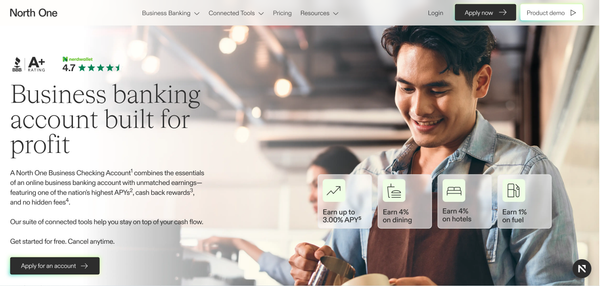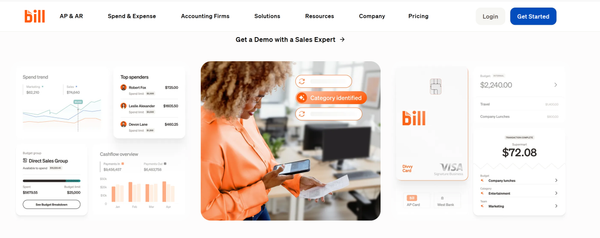Unlocking Revenue Growth: Key Steps to Developing Successful Strategic Partnerships

Looking to boost your company's bottom line? Strategic partnership marketing might just be the avenue you haven't explored yet. It's an approach that leverages the strengths and audiences of two collaborating businesses to drive revenue growth. This article will break down how to understand, build, and measure the effectiveness of strategic partnerships.
1. Understanding Strategic Partnership Marketing
1.1 What is Strategic Partnership Marketing?
Strategic partnership marketing is about joining forces with another business to achieve mutual marketing and sales goals. It's more than a simple collaboration; it's a relationship where both parties bring something valuable to the table, be it resources, expertise, or customer bases. Imagine a sportswear brand collaborating with a fitness tracker app. Both cater to similar audiences but offer complementary products, potentially doubling their reach with half the effort.
Pro-tip: Choose a partner whose business values align with yours for a smoother collaboration.
In today's fiercely competitive market, standing out is no easy feat. Strategic partnership marketing offers a way to expand your audience and enhance your product offerings without significant investment. A recent study by Coopers & Lybrand found that companies involved in strategic partnerships could see revenue growth rates increase by up to 30%. This not only shows the power of such alliances but also highlights the importance of choosing the right partner.
1.2 Why is it Important for Revenue Growth?
In the quest for revenue growth, strategic partnership marketing serves as a catalyst, turbocharging your efforts to reach more potential customers. By pooling resources with another business, you can access new markets, enhance your product or service offerings, and even improve your brand perception without the hefty investment typically associated with such advancements.
Consider the impact of co-marketing campaigns, where two brands collaborate on a single campaign, sharing costs and maximising exposure. This strategy not only splits the marketing budget but also introduces your brand to your partner's loyal audience, potentially increasing your customer base and, by extension, your revenue.
1.3 How to Identify Potential Partners?
Identifying potential partners is a critical first step in strategic partnership marketing. The ideal partner is one whose business complements yours while reaching similar target audiences. Here are simple steps to start your search:
- Define Your Objectives: Why are you seeking a partnership? Begin by clarifying your business goals and what you aim to achieve through partnerships. Whether it's expanding market reach, enhancing product offerings, or increasing brand visibility, having clear objectives will guide your partnership endeavours.
- Identify Ideal Partners: Look for businesses that offer complementary services or products but don't directly compete with yours. Consider factors such as industry relevance, market reputation, and alignment of values. Utilize networking events, industry associations, and online platforms to identify potential partners.
- Analyse their audience: Ensure their customer base aligns with your ideal target audience.
- Initiate Meaningful Conversations: Reach out to potential partners with a personalized approach that highlights the mutual benefits of collaboration. Express genuine interest in their business and propose value-driven ideas for partnership. Establishing rapport and trust is essential for laying the foundation of a successful collaboration.
- Research and Due Diligence: Partner with businesses that uphold similar values and standards to maintain your brand's integrity. Conduct thorough research on prospective partners to assess their reputation, track record, and compatibility with your business objectives. Evaluate their strengths, weaknesses, and market positioning to ensure alignment with your goals.
- Negotiate Mutually Beneficial Agreements: When formalizing partnerships, prioritize fairness and transparency in negotiations. Define clear roles, responsibilities, and expectations for both parties. Seek win-win outcomes that deliver value to each partner while mitigating risks and conflicts.
- Collaborate for Maximum Impact: Actively engage with your partners to leverage each other's strengths and resources. Explore synergies in marketing campaigns, co-develop products or services, and share customer insights to optimize results. Foster open communication and adaptability to capitalize on emerging opportunities.
- Monitor and Evaluate Performance: Establish metrics and key performance indicators (KPIs) to measure the effectiveness of your partnerships. Regularly assess the impact on revenue growth, customer acquisition, and brand awareness. Identify areas for improvement and refine your strategies accordingly.
- Nurture Long-Term Relationships: Invest in cultivating strong, enduring partnerships built on trust, mutual respect, and shared success. Stay proactive in addressing challenges, resolving conflicts, and adapting to evolving market dynamics. Celebrate achievements together and explore new avenues for collaboration to sustain long-term growth.
Pro-tip: Attend industry networking events and utilise professional networking platforms to find and connect with potential partners. Networking is key to uncovering opportunities you might not have found through a simple online search.
2. Building Successful Strategic Partnerships
2.1 Finding the Right Partner
When you're on the lookout for the perfect partner, think about complementarity. Your ideal partner should bring something to the table that you lack and vice versa. This could be a difference in audience demographics, technology, product offerings, or market access. It's like putting together a puzzle – the right piece will fit seamlessly, enhancing the overall picture. Look for companies that align with your brand values and goals, as this will make collaboration smoother and more productive.
Pro-tip: Conduct a thorough market analysis to understand potential gaps in your offerings that a partner could fill. This strategic approach ensures that the partnership adds real value to both businesses.
Important considerations include:
- Brand alignment: Ensure your potential partner shares similar values and targets a complementary audience.
- Mutual benefit: Both parties should gain substantial benefits from the partnership.
- Long-term potential: Look for partners with whom you can grow and evolve over time.
Making the right choice involves not just identifying potential partners but also vetting them thoroughly. Evaluate their reputation, financial stability, and the success of previous partnerships. Discussions should explore mutual goals and the potential for shared success. Remember, the ideal partner is one who is as committed to your success as their own.
2.2 Setting Goals and Expectations
Clearly defined goals and expectations are the bedrock of any successful partnership. Start by outlining what you aim to achieve through the partnership, be it increasing brand reach, entering new markets, or enhancing product offerings. Both parties must have a clear understanding of the partnership's objectives and what success looks like. This clarity will guide your joint efforts and help in measuring the partnership's effectiveness over time.
Key Steps:
- Set specific, measurable goals: Ambiguity can derail partnerships. Aim for clarity and precision in your objectives.
- Discuss expectations openly: Ensure both partners have a clear understanding and agreement on each party’s contributions and expected outcomes.
- Draft a formal agreement: Having a legally binding document outlines the partnership structure, timelines, and responsibilities, providing a clear roadmap for collaboration.
Communication is crucial in this phase. Regular meetings and updates can help keep everything on track and allow for adjustments as necessary. Establishing benchmarks for success and periodically reviewing progress towards your goals ensures that the partnership remains productive and on course.
2.3 Maintaining Strong Communication
Effective communication is the lifeline of any strategic partnership. It's essential for navigating challenges, aligning on goals, and fostering a relationship built on trust and transparency. Establish structured communication channels and regular check-ins to keep both parties informed and engaged. Whether it’s weekly meetings, monthly reports, or shared dashboards, choose the methods that work best for your partnership.
Tools and strategies for effective communication:
- Dedicated communication channels: Slack channels, emails, or regular video calls can keep conversations flowing smoothly.
- Shared project management tools: Platforms like Trello or Asana can help track progress and manage tasks collaboratively.
A successful partnership is a two-way street. Be open to feedback and willing to adjust strategies as needed. Celebrate wins together and learn from any setbacks. By maintaining strong communication, you create a firm foundation for a partnership that can weather challenges and lead to significant growth for both businesses.
Pro-tip: Regularly scheduled review meetings provide an opportunity to address concerns early and readjust strategies, ensuring the partnership stays aligned with its goals.
3. Measuring Success in Partnership Marketing
3.1 Tracking and Analyzing Key Performance Indicators (KPIs)
To gauge the effectiveness of your strategic partnership marketing, it is crucial to track and analyse Key Performance Indicators (KPIs). These metrics could range from increased sales volumes, website traffic sources, conversion rates, or social media engagement metrics, depending on the objectives set out at the partnership's initiation.
- Identify the most relevant KPIs that align with your partnership goals.
- Use analytics tools to monitor these indicators regularly.
- Adjust your strategies based on what the data tells you.
This approach not only helps in understanding how the partnership is contributing to your revenue growth but also offers insights into areas that may need improvement. For instance, if a key goal was to increase brand awareness through the partnership, tracking changes in brand mentions across social platforms can provide a clear measure of success.
Pro-tip: Combine quantitative KPIs, such as sales figures, with qualitative indicators like customer satisfaction to get a comprehensive view of the partnership's impact.
Additionally, with 73% of marketers considering increasing sales as the most crucial benefit of partnership marketing, according to a recent study by CoMarketing, pinpointing the exact role your partnership plays in achieving this can steer future strategies in the right direction. Remember, the key is to remain agile, using data-driven insights to refine and enhance your partnership's contribution to your business goals.
3.2 The Role of Feedback in Optimizing Partnerships
Effective partnerships thrive on open communication and continuous feedback. Regular check-ins with your partner not only foster a strong working relationship but also enable both parties to discuss what's working and what isn't. Feedback can come through formal channels, like quarterly business reviews, or through casual conversations. However you choose to do it, ensure that:
- Feedback is constructive and solution-focused.
- Both positive and negative feedback is shared to celebrate successes and tackle challenges head-on.
Constructive feedback aids in identifying areas for improvement and opportunities for growth, which is essential for the long-term sustainability of the partnership. Additionally, actively soliciting feedback from customers about their experiences or perceptions related to the partnership can yield valuable insights that might not be apparent from internal discussions alone.
Pro-tip: Regularly sharing insights and learnings between partners can lead to innovations and improvements in strategy, benefiting both parties and the customers they serve.
3.3 Scaling Your Strategy for Long-Term Growth
Once the partnership has been established, and initial goals are met, it's vital to think about how to scale the strategy for long-term growth. This could include expanding the scope of the partnership, exploring new markets together, or increasing investment in successful initiatives. Important steps include:
- Reviewing the partnership's performance regularly against the set KPIs.
- Engaging in strategic planning sessions with your partner to explore new opportunities.
- Leveraging successes to onboard additional partners or deepen existing relationships.
Expanding on what works and learning from what doesn’t can help in fine-tuning your approach towards strategic partnership marketing. It’s about building on the foundation you've created to maximise the benefits for both partners, leading to sustained revenue growth and a competitive edge in the market.
Pro-tip: Consider introducing new products or services through the partnership as a way to keep the offering fresh and relevant to your audience.
In conclusion, strategic partnership marketing offers a wealth of opportunities for businesses looking to drive revenue growth. By carefully selecting partners, setting clear goals, and continuously measuring and optimising performance, companies can achieve significant benefits. Success lies in understanding the intricacies of partnership dynamics, maintaining open communication, and leveraging insights to scale the strategy for long-term growth. By doing so, businesses can not only boost their revenue but also strengthen their position in the market.
Ready for growth but not sure where to start? Let us help you accelerate your revenue growth and gain a competitive edge. Book an appointment with Bloomclicks today and discover how partnership and affiliate marketing can turn the tide in your favour.
Frequently Asked Questions
How do partnerships increase revenue?
Partnerships increase revenue by:
- Opening access to new markets and customer segments.
- Leveraging each partner's strengths for mutual benefit.
- Sharing resources to reduce costs.
- Enhancing product or service offerings through collaboration.
- Increasing brand exposure and credibility.
What is partnership marketing and how can it increase sales?
Partnership marketing is a collaboration between two or more businesses aiming to create a win-win promotional strategy, increasing sales by:
- Combining marketing resources for larger campaigns.
- Cross-promoting products to each partner's customer base.
- Creating bundle offers that provide more value.
- Utilising joint social media and content marketing strategies.
- Leveraging each other's unique strengths to boost sales effectiveness.
How do you succeed in strategic partnerships?
To succeed in strategic partnerships:
- Clearly define goals and expectations.
- Choose partners with aligned interests and values.
- Foster open, transparent communication.
- Continuously monitor and adjust strategies based on performance data.
- Celebrate shared successes and learn from challenges together.
How do you build strategic partnerships and grow your business?
Building strategic partnerships and growing your business involves:
- Identifying potential partners with complementary strengths.
- Establishing clear, mutual objectives for the partnership.
- Developing a structured plan with defined roles and responsibilities.
- Maintaining ongoing communication and fostering trust.
- Measuring success and making adjustments as necessary for growth.





